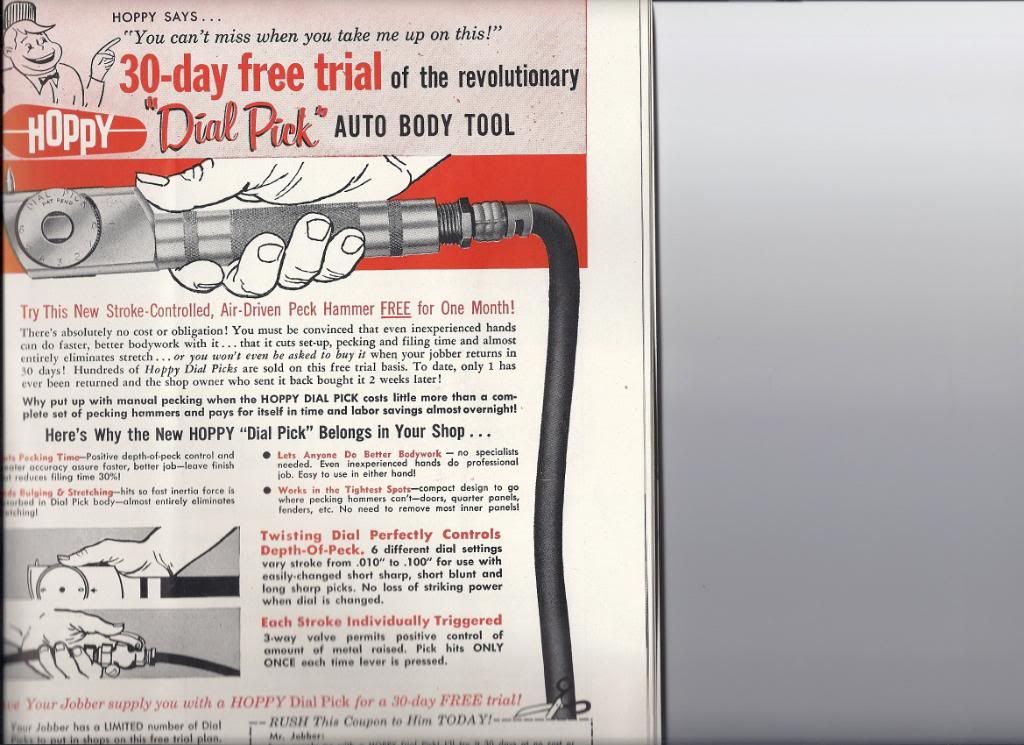There is a very odd Craftsman hammer which would be a roughing or a fender hammer. Craftsman never made their own body repair tools, they simply commissioned other companies and re-labeled them as Craftsman. Craftsman first used Steamline for their body tools. If you find a Craftsman hammer with blue paint chances are it is actually a relabeled Streamline and a good quality hammer. My Craftsman tool catalog from 1941 lists this hammer as the 4575.
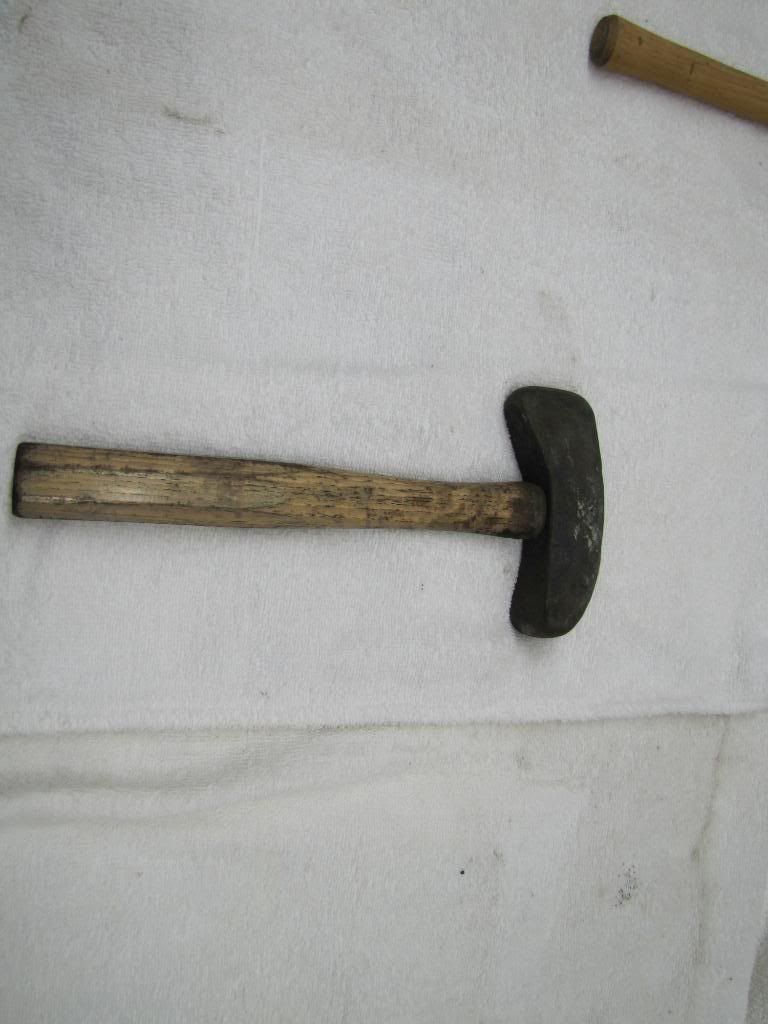
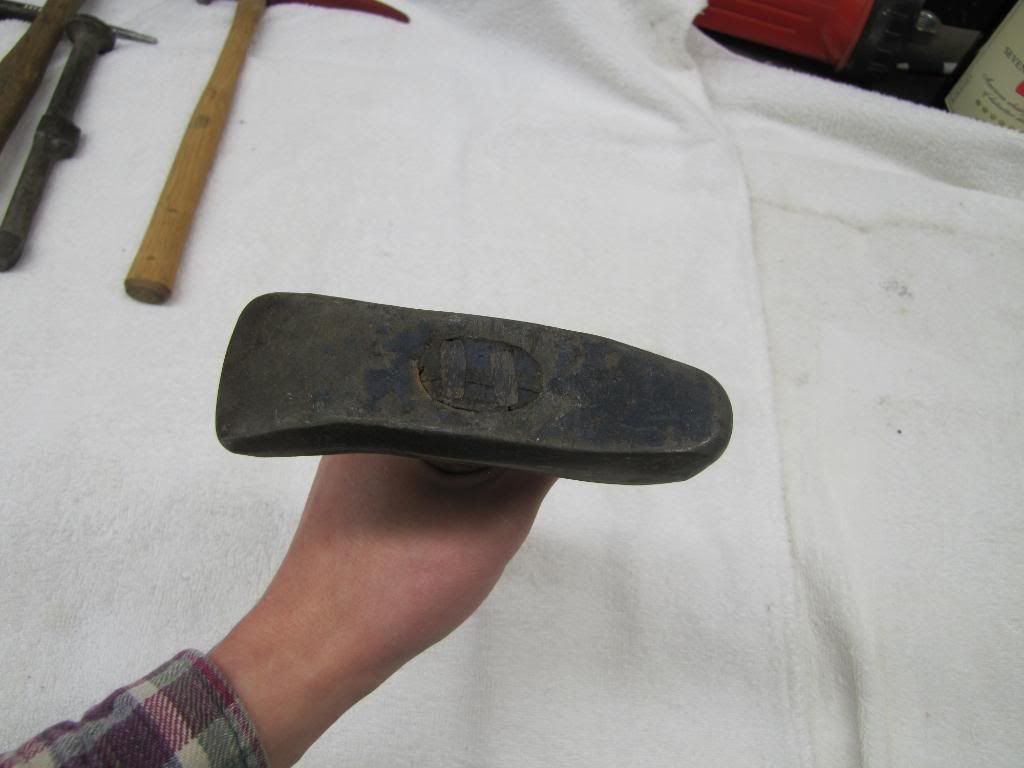
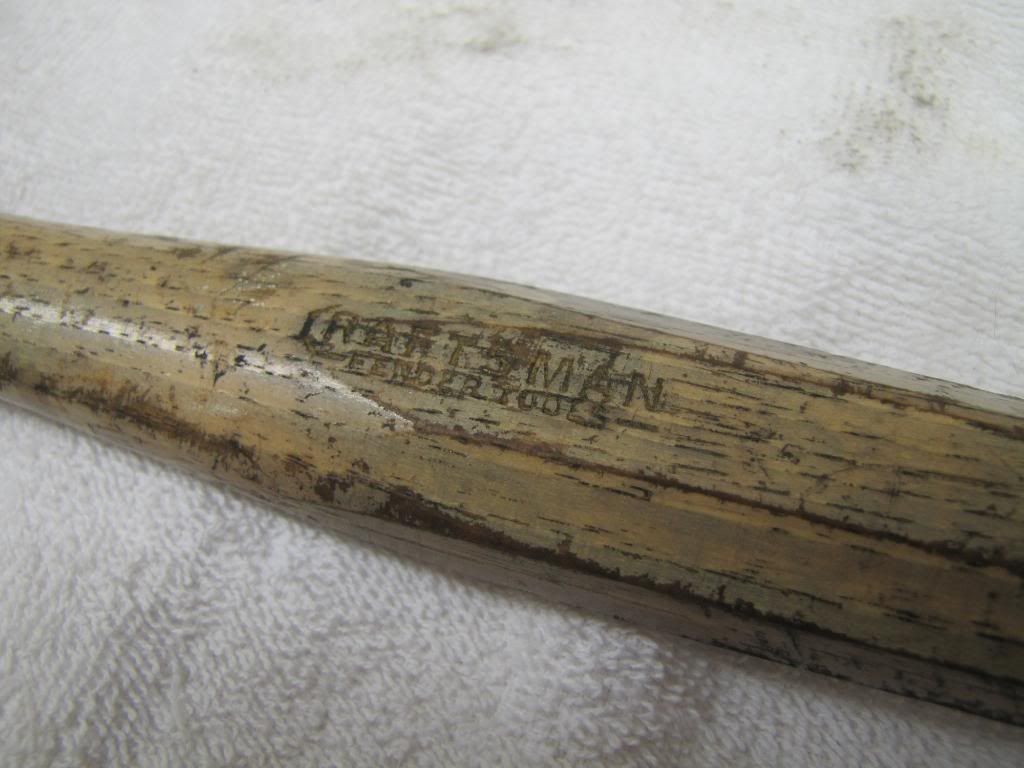
Large fender hammer used for roughing out damage quickly. Made by Streamline donít know the number. The design allows you to remove dents without removing the tire and also be used as a caulking tool, meaning you strike the hammer head with another object much like a chisel.

Streamline on the left compared to the Plomb 1416 on the right. Different hammer profiles so you got to have them both.
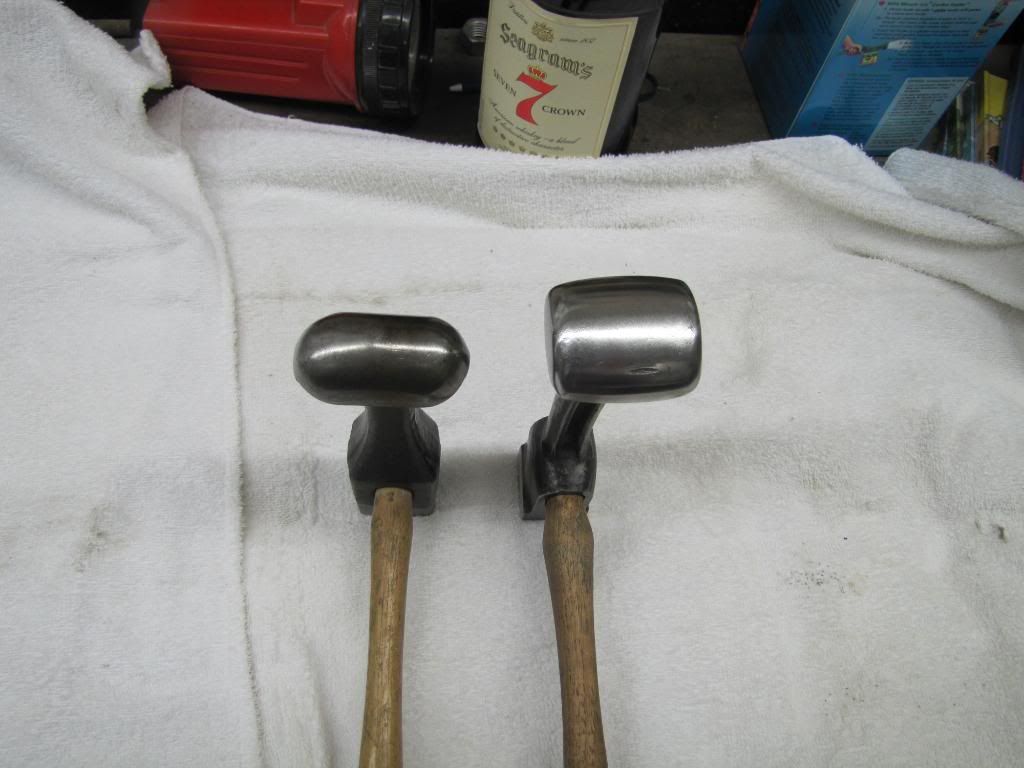
Since this photo was taken I added another 1416 to the collection for a total of 3 Plomb 1416 hammers, just canít say no to old cool tools.
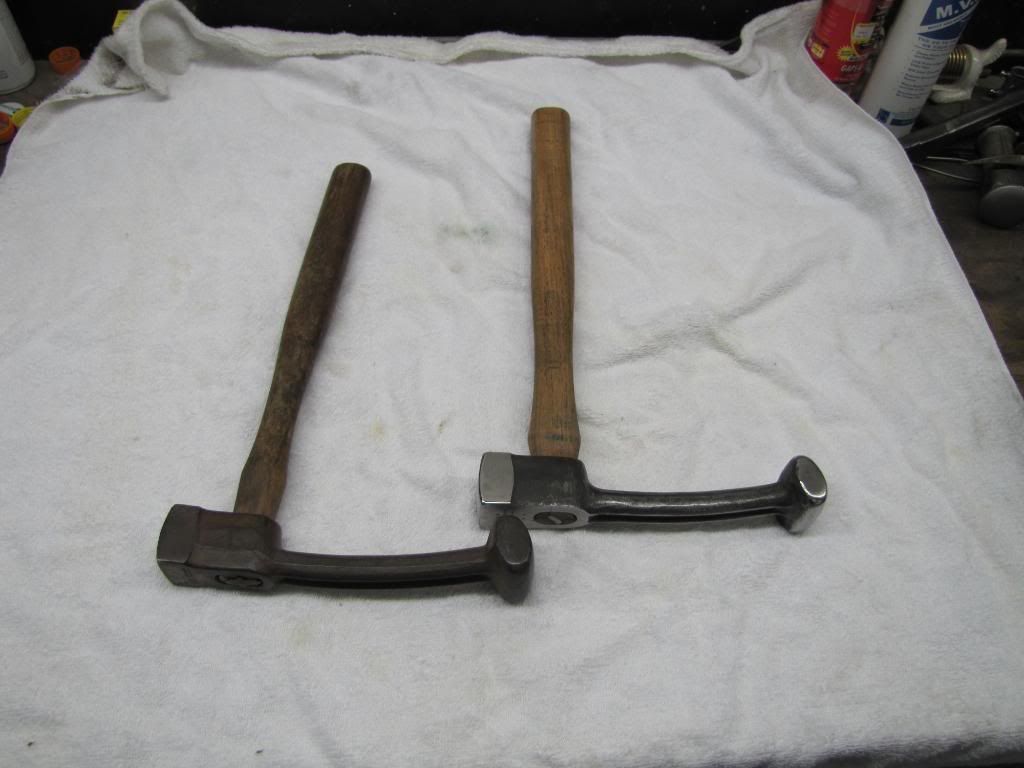
Stanley 597 fender hammer another large heavy hammer for roughing out deep dents.
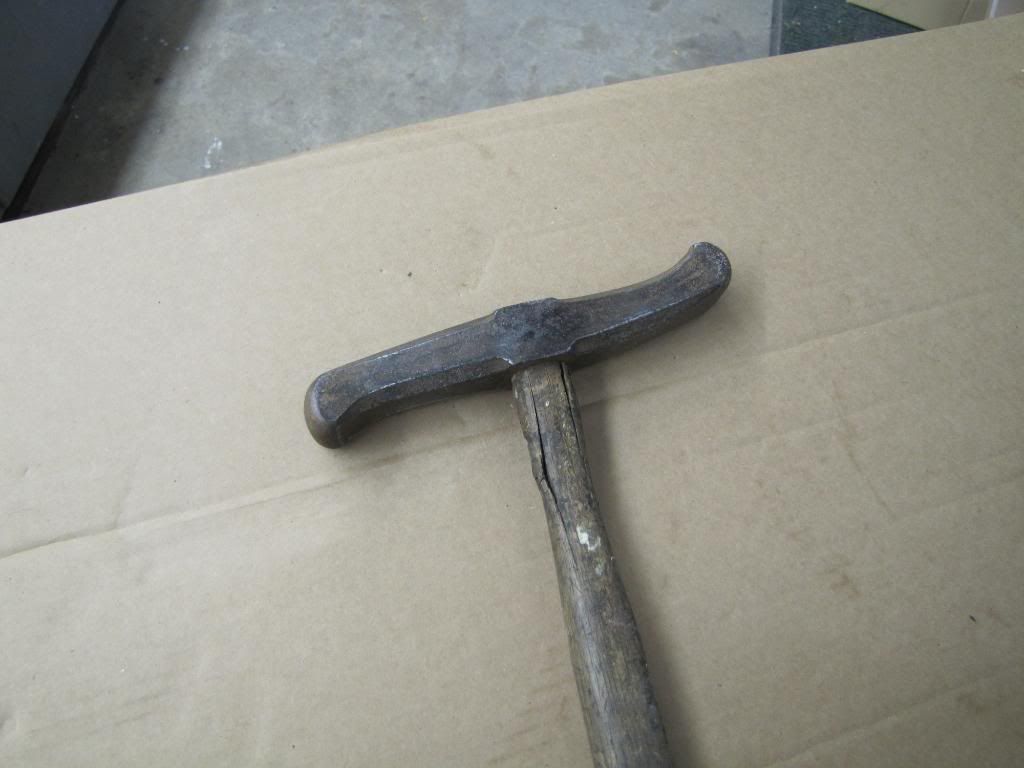
Plomb 1416 on left and Fairmount 155 on the right. Similar in design but the Fairmount is smaller in size. I use the Fairmount hammer quite often, the fender hammer style is very handy.
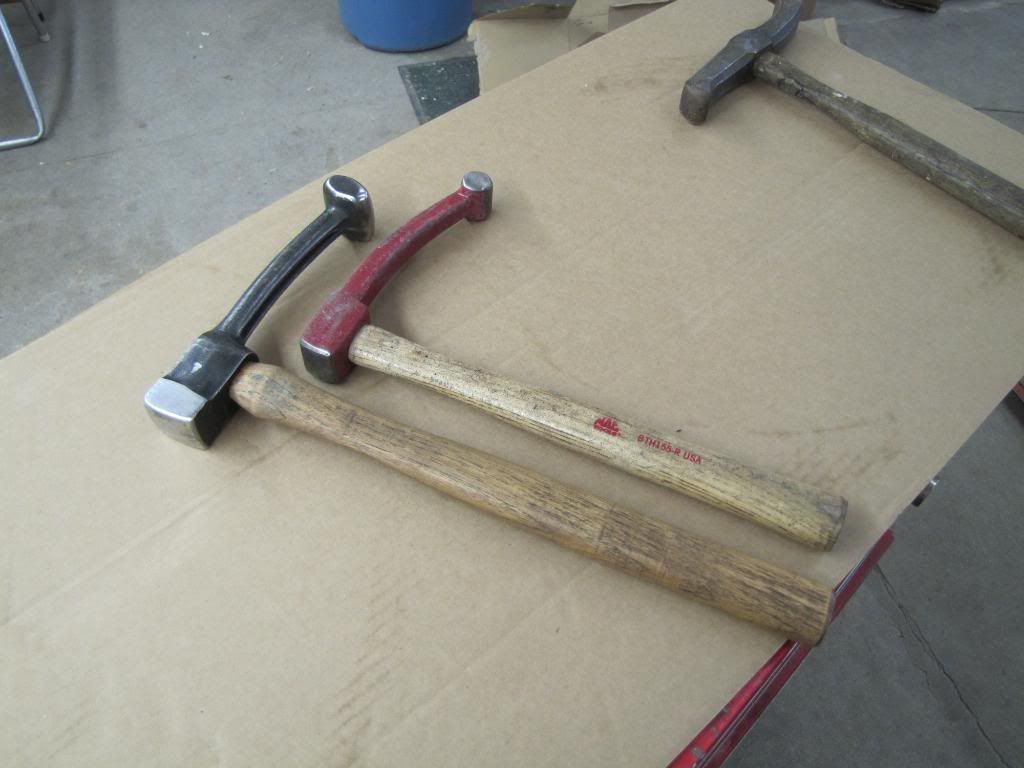
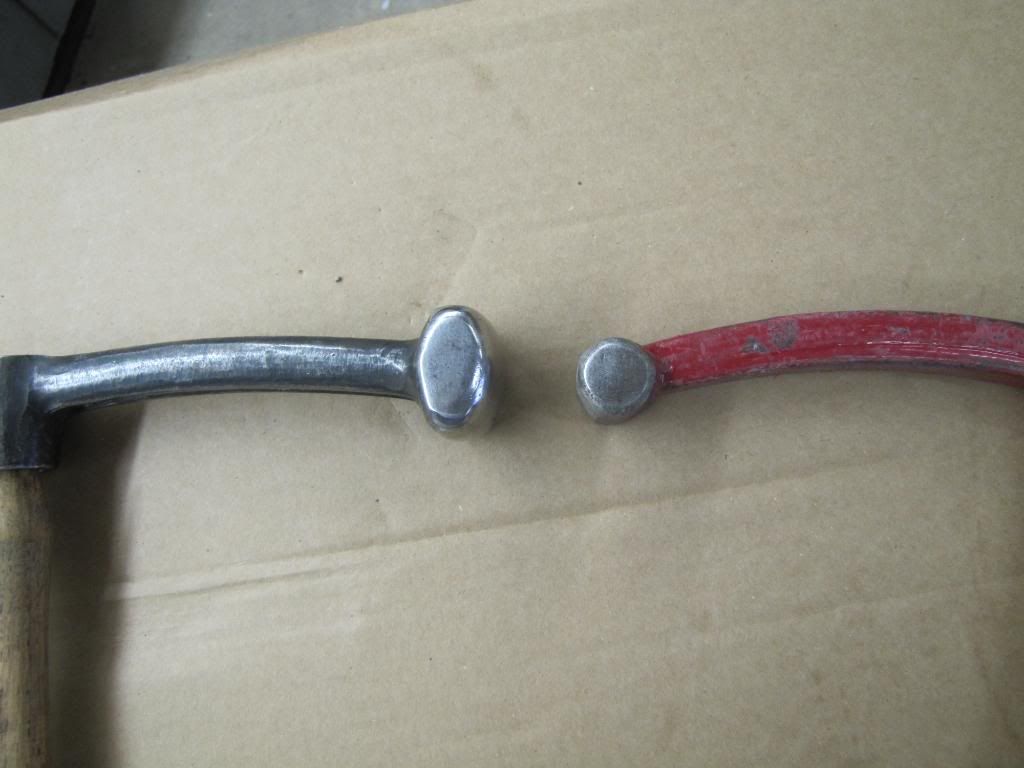
Heller fender hammer on the left compared to the Plomb 1416 on the right. Pretty darn close in design, the Heller has a larger striking head.
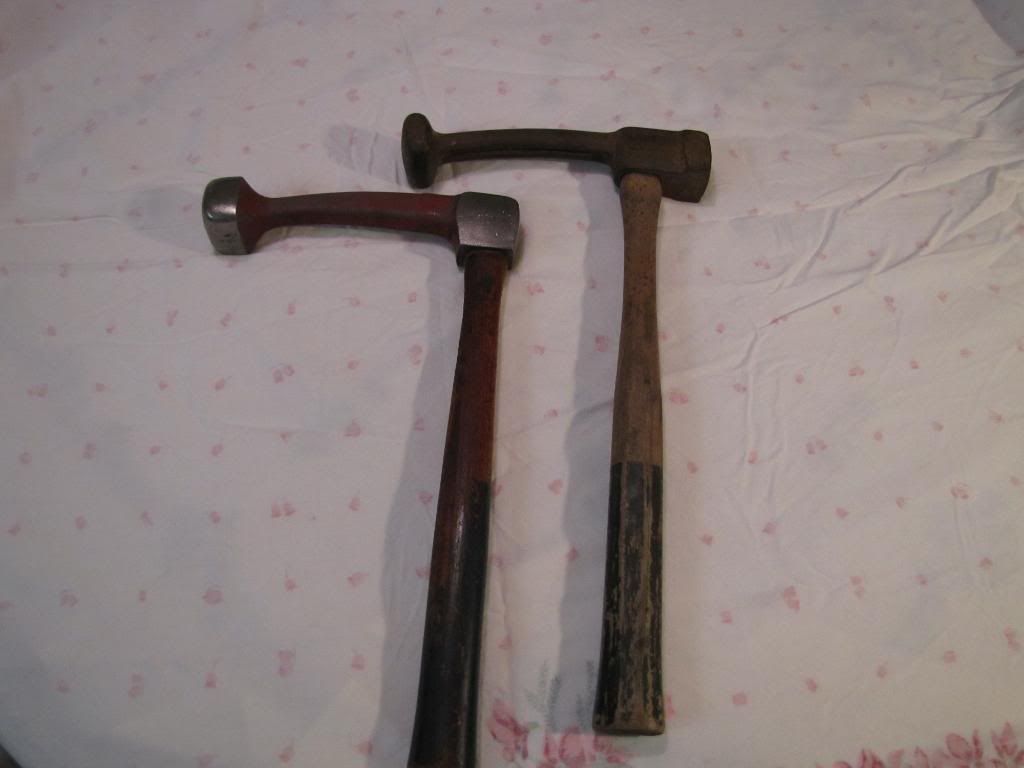
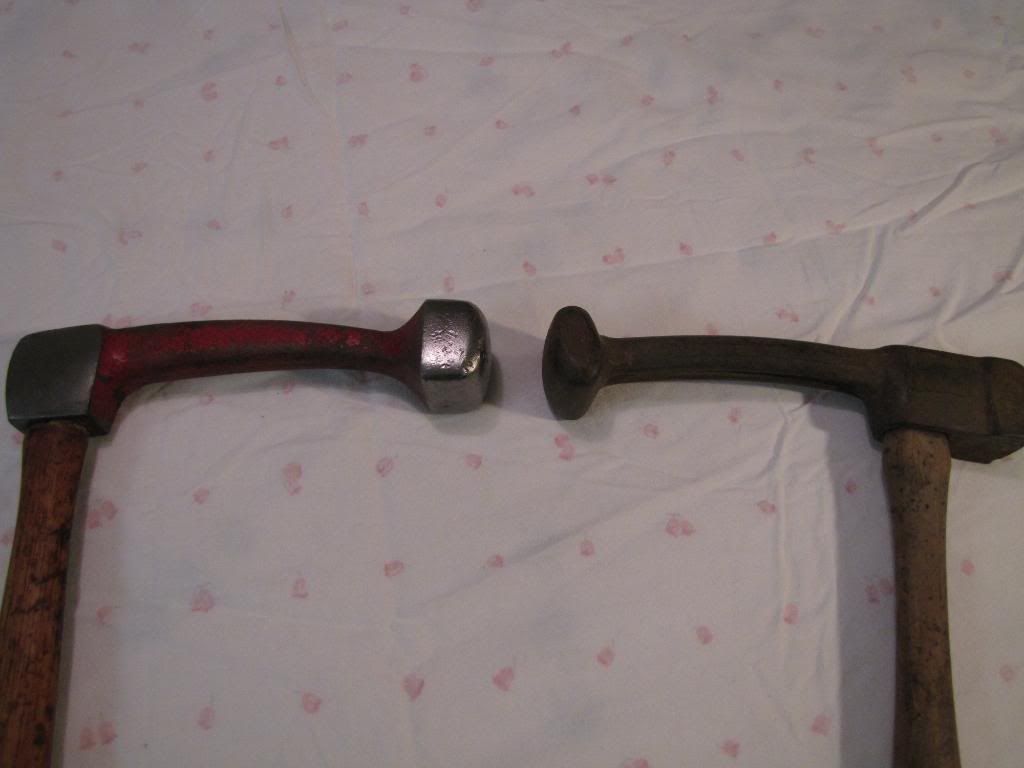
Some might be asking, hey whereís the Porter Ferguson fender hammer all I see is Craftsman, Streamline, Heller, Stanley, Fairmount, and Plomb? Well wait no longer, the P-F fender hammer is the RH-10. The very early RH-10 had a round face compared to square face shown below and are extremely rare, Iíve yet to see one anywhere. As you can see P-F took a slightly different approach to the fender hammer design. The double head design makes this hammer easier to use because the weight is not offset to one side.

P-F hammer on the right compared to the Plomb 1416 fender hammer. Neither hammer is light weight both are bruisers, nice hammers to have when you need to do some serious metal bumping.
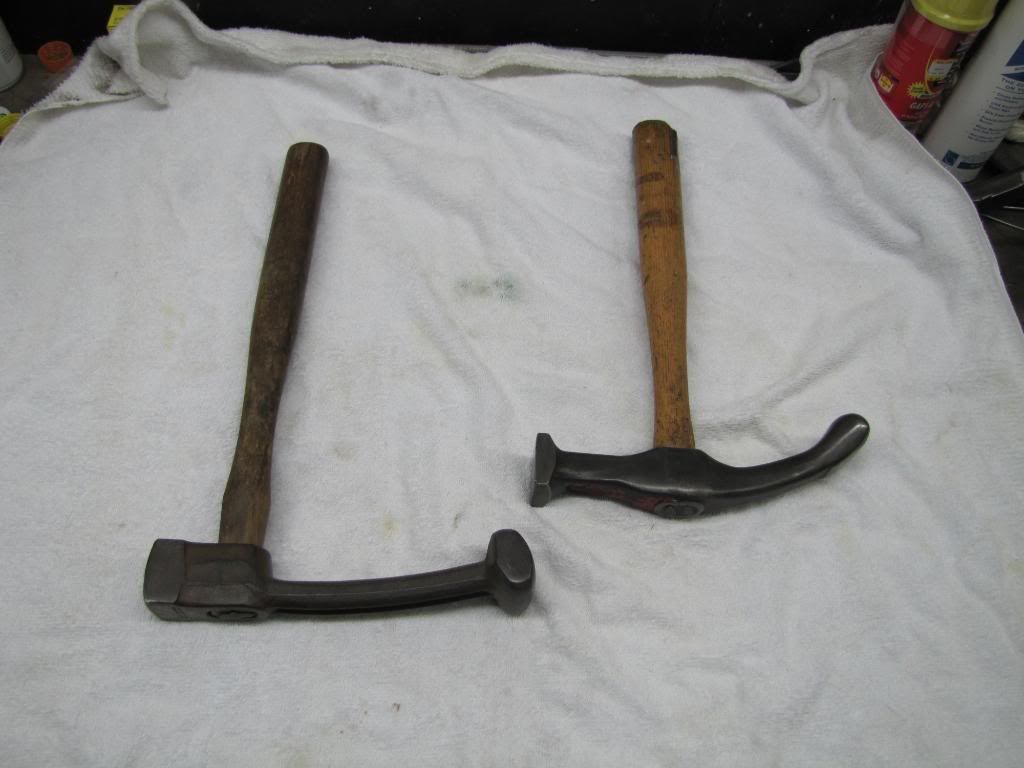
Pexto reveal hammers which have offset heads. Hard to find style of hammer as only a few companies made offset heads. The offset heads are capable of reaching irregular angles regular hammers canít reach.
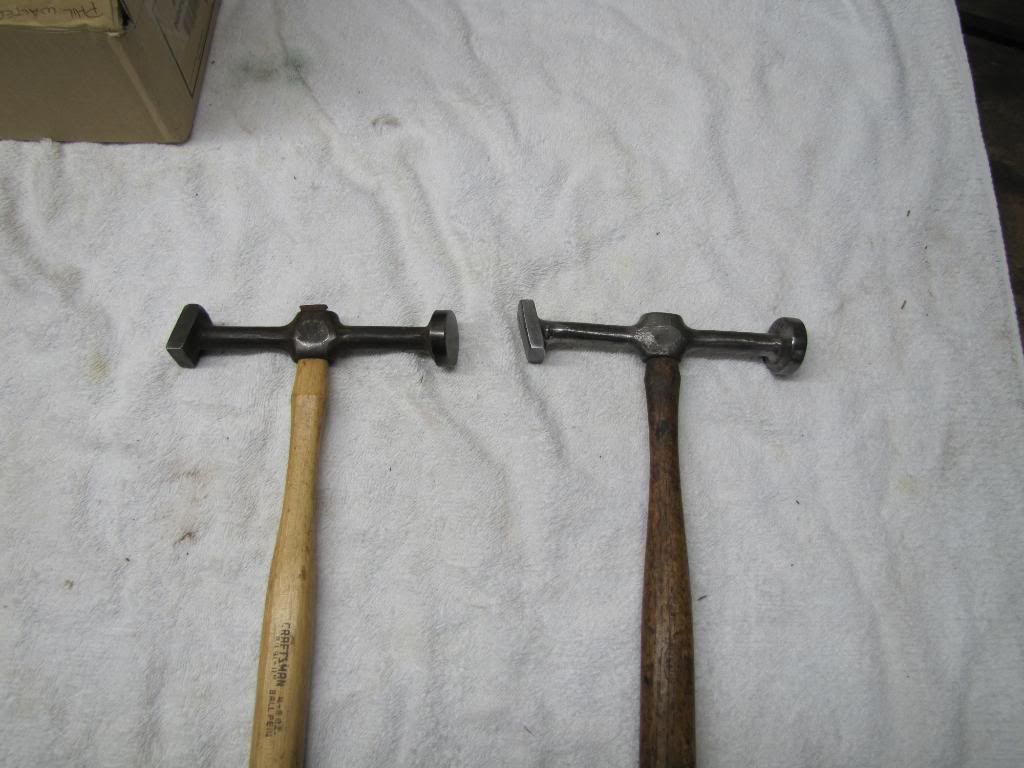
Notice how both faces are angled and not straight up and down like regular body hammers.
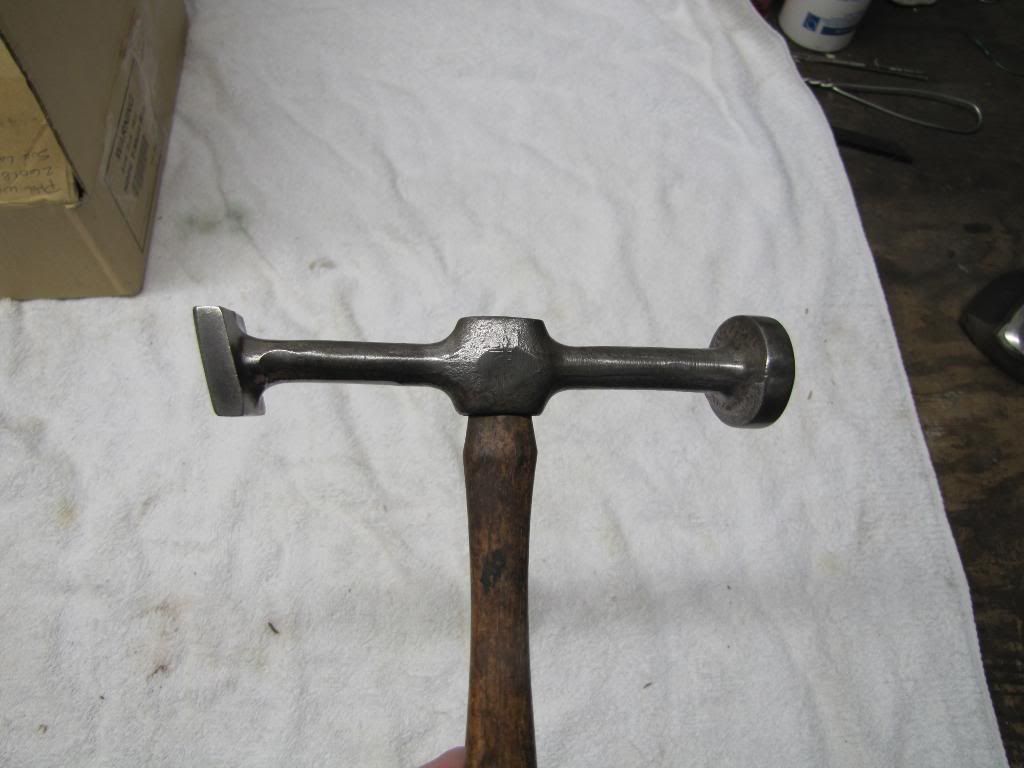
A different type of pick hammer, a pneumatic pick hammer. The major downfall to pick hammers is the lack of room often needed to properly swing the hammer from the backside to rise a low spot. The solution was a pneumatic pick hammer eliminating the need to swing a hammer, just squeeze the trigger and the pick extends out. I first saw ads for this tool in trade magazines dating back to the early 1950ís. To my knowledge only two companies built pneumatic pick hammers, the model shown is the Air Peck model. The other pneumatic pick hammer from Hoppy had an adjustable dial capable of changing the stroke of the pick. My pneumatic pick hammer has a fixed stroke.
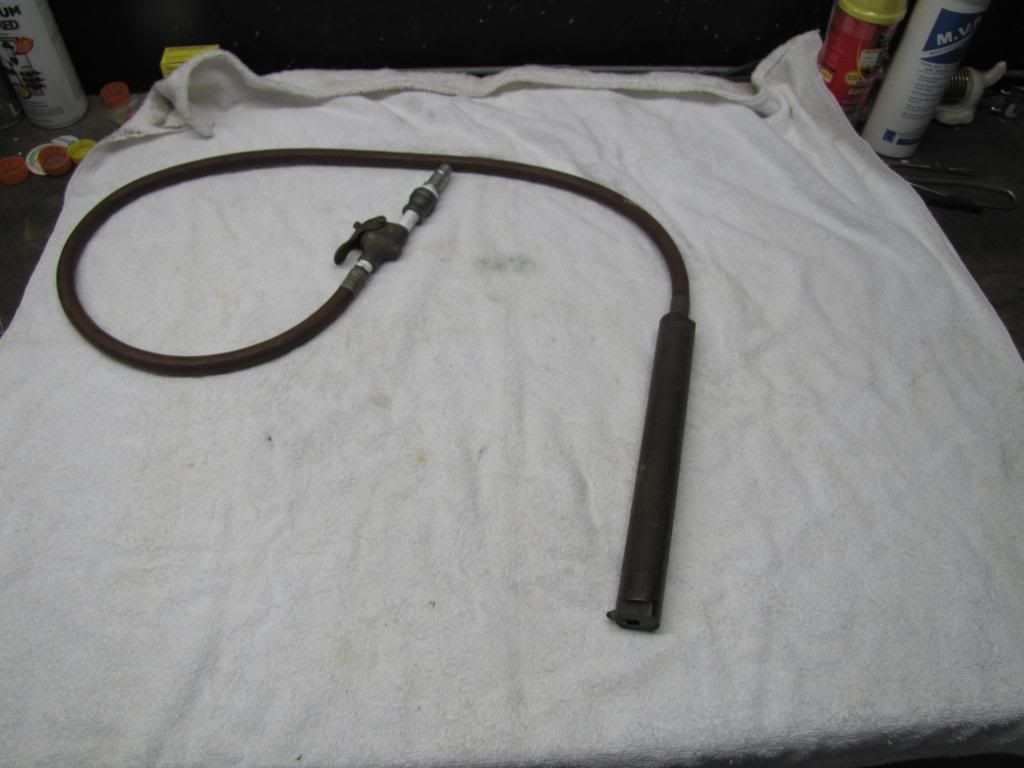
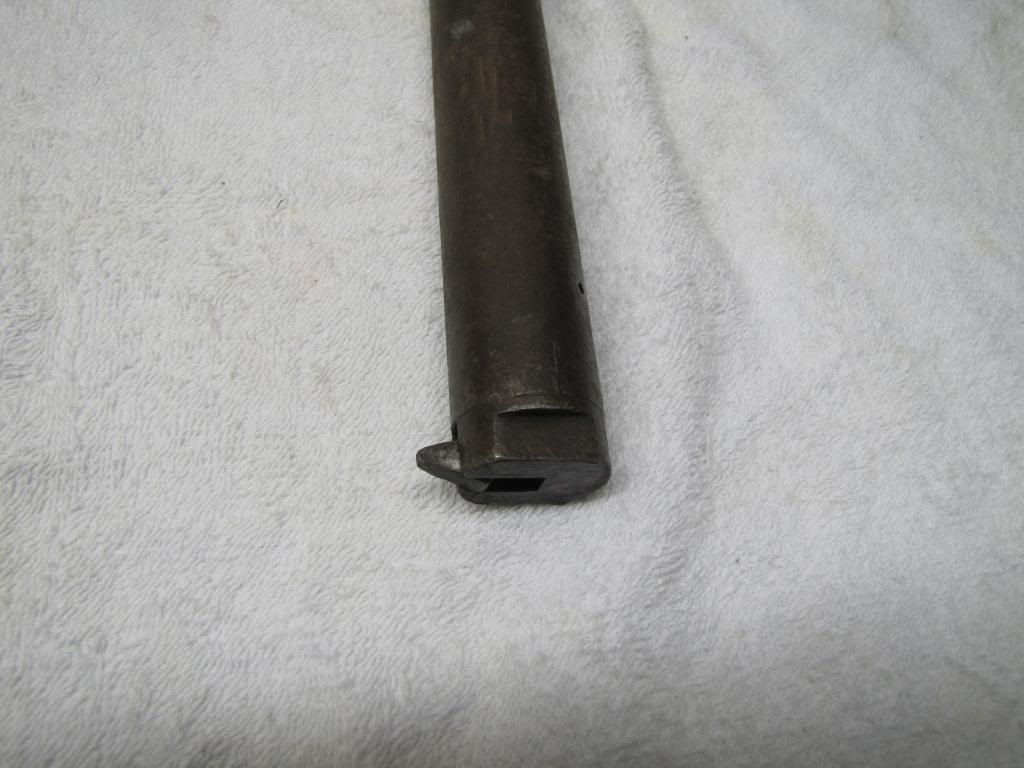
Ad for the Hoppy dial air pick hammer which has the adjustable stroke. The ad is from a monthly trade magazine from 1953 called Autobody and the Reconditioned Car.
